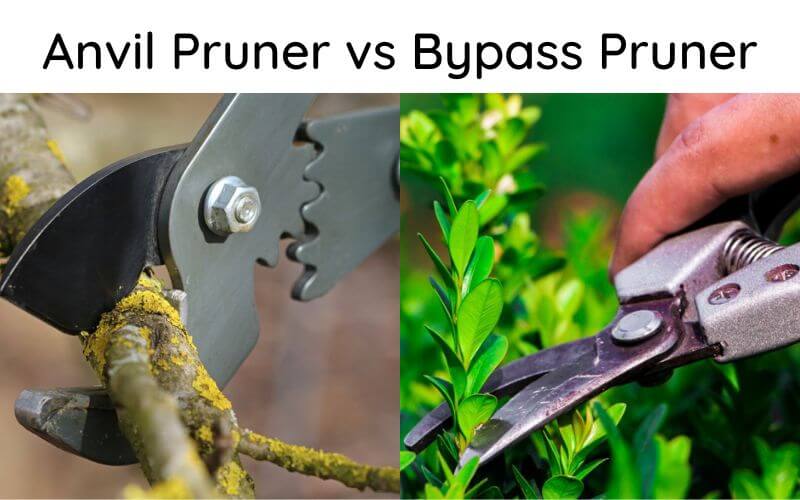The main difference between Anvil and Bypass pruners is the blades. Anvil pruners have a sharp blade and a metal surface, or pocket that the blade cuts up on. Bypass pruners have two blades that bypass each other, that’s why the name. Bypass pruners are suitable for cutting the growing stems while the Anvil pruners work effectively on the dead branches.
We use pruners often in our garden chores. So it is crucial to know which kind of pruners to use.
Anvil pruners might look similar to Bypass pruners, but they both operate differently. They both serve different purposes according to their design.
In this article, you’ll learn the main differences between the Anvil pruners and the Bypass pruners.
What is an Anvil Pruner used for?
Anvil pruners can be used to prune off any dead wood on a tree. The mechanism is quite suitable for getting rid of the dead branches of a tree.
If you use Anvil pruners all the time, you’re doing it wrong. Only use Anvil pruners if you’re dealing with dead branches.
The working principle of Anvil pruners
Anvil pruners work just like a knife. The sharp blade cuts the branches by pressing them against the flat surface/anvil.
This is why Anvil pruners are considered to be very powerful. They can be used to get rid of dead branches that are quite hard.
Anvil pruners employ a distinctive cutting mechanism that smashes or pinches any material that is put in between the blade and the anvil.
The Anvil pruners are built in such a way as to prevent the twisting of the blades. This crushing action of the Anvil pruners damages the plant tissue a lot.
What is a Bypass Pruner used for?
Bypass pruners are used to prune back the growing stems on a plant/tree. The bypass cutting mechanism allows for a pristine and smooth cut.
The blades of the bypass pruners may twist if the material is too large or too hard. The blades would just bypass too far, so to say.
The plants on which you use Bypass pruners recover quickly from the trim. The design of the Bypass pruners is such that you can get close to the buds of a stem.
Why is it called a bypass pruner?
Bypass pruners appear just like a pair of scissors. These pruners have a sharp blade and a counter blade. These two blades bypass each other while cutting a branch.
The pruners are called bypass pruners because of this cutting mechanism. The plant tissue that’s left on the plant isn’t damaged because of this mechanism.
The working principle of Bypass pruners
In bypass pruners, the two blades bypass each other to create a clean cut. The plant tissue won’t be damaged even if you’re an amateur.
The two blades pass over each other to provide a clean cut. This is the reason why Bypass pruners are perfect to cut back growing branches.
Push the branches away from the blades if you’re dealing with the bigger branches. This makes the cut easier and the blades won’t be damaged.
Tip: Sharpen the blades of the Bypass pruners as they dull after a while.
What is the difference between the Anvil and Bypass Pruners?
We’ve made a table below to differentiate between the Anvil and Bypass pruners easily. Listed below are some key differences between the two types of pruners.
| Anvil Pruners | Bypass Pruners |
|---|---|
| Anvil Pruner has a single blade that sits in a metal pocket on the other side. | Two blades bypass each other in Bypass pruners. |
| Suitable for cutting off the dead branches. | Bypass pruners are used to cut the growing stems on a plant. |
| More sturdy as the blade doesn't get twisted. | The blades might get twisted when dealing with the bigger branches. |
| Anvil pruners might damage the plant tissue that's left on the plant. | The Bypass cutting mechanism lets you prune the growing branches flawlessly. |
Which is better, bypass or anvil pruners?
Bypass pruners are suitable for a lot of chores in the garden. You can use bypass pruners to get rid of even dead branches, provided they’re well-built.
Anvil pruners are used for the dead branches as their cutting mechanism is quite powerful. One shouldn’t use them on live branches.
So, we can’t tell which one’s better. Both these pruners are built for different purposes.

